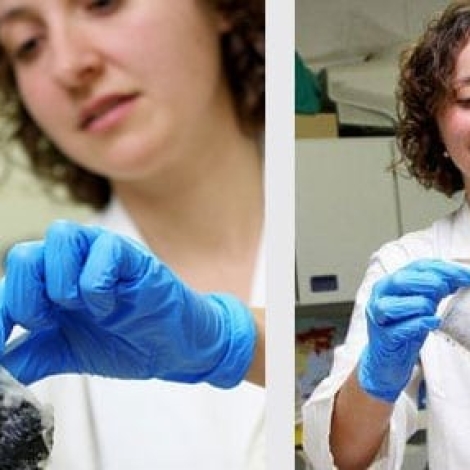
Scientists at South Africa’s Stellenbosch University developed this disposable “tea-bag” water filter, an example of a low-cost, consumable solution to a problem that can also be solved with more expensive, long-lasting infrastructure. Photo courtesy of Stellenbosch University
In this week’s Big Design Question we’re looking at advantages of “high” and ‘low” technologies, and how the two might work together to meet basic needs in developing countries. The question is part of our weekly series that tests the design principles outlined in our Introduction to Engineering for Global Development. Khanjan Mehta, a contributing editor at E4C and head of the Humanitarian Engineering and Social Entrepreneurship (HESE) program at Penn State, and his students first posed this week’s question in a paper published in the IEEE Technology and Society Magazine. Khanjan offers his thoughts below and we’d like to put the question to the entire community if you would please share your comments at the end.
Information about the technologies mentioned here and many more is available for review in our Solutions Library.
Is it more important for technologies to be affordable or durable?
Engineers are sometimes forced to decide between easy, short-term solutions and more complex, expensive, but long-lasting ones. They should base these decisions on the expectations of the consumers and on other conditions such as access to capital.
Here are some questions to consider. Do consumers want an inexpensive device that must be replaced every year or a more expensive device that will last longer but requires repairs? Is it possible to do repairs locally? Which is easier, applying for a loan or saving small amounts of money to periodically buy consumable products?
There may be a way to side-step the question of affordability versus durability, and that is through a pay-for-use business model.
There are a few ways to support products that have a long lifespan but need repair along the way. One way is to incorporate maintenance into the purchase price. SELCO, a social enterprise in India, provides personalized solar power systems for customers with routine maintenance included in the cost. While the initial price is higher, the solar systems are maintained by trained technicians and continue to work well over time.
Other social enterprises develop a “do-it-yourself” technology that encourages consumers to understand the product and learn to maintain it themselves. The challenge they face is that tools are not always available in many areas and the do-it-yourself culture is not as common in developing communities, especially for more expensive products.
And on the other side of the equation we have consumable products. One example is disposable, “tea-bag” water filters developed by a team at Stellenbosch University in South Africa.
As a parting thought, there may be a way to side-step the question of affordability versus durability, and that is through a pay-for-use business model. In this model, customers pay to use a product, but they don’t pay for the product itself. For example, customers might pay to use power from a solar panel, but they don’t have to buy the panel outright. In these cases, the company that owns the panels pays to maintain them.
We’d like to hear your opinions about the issue in the comments below.

